Analysis of the "Martian": Mars, science, politics
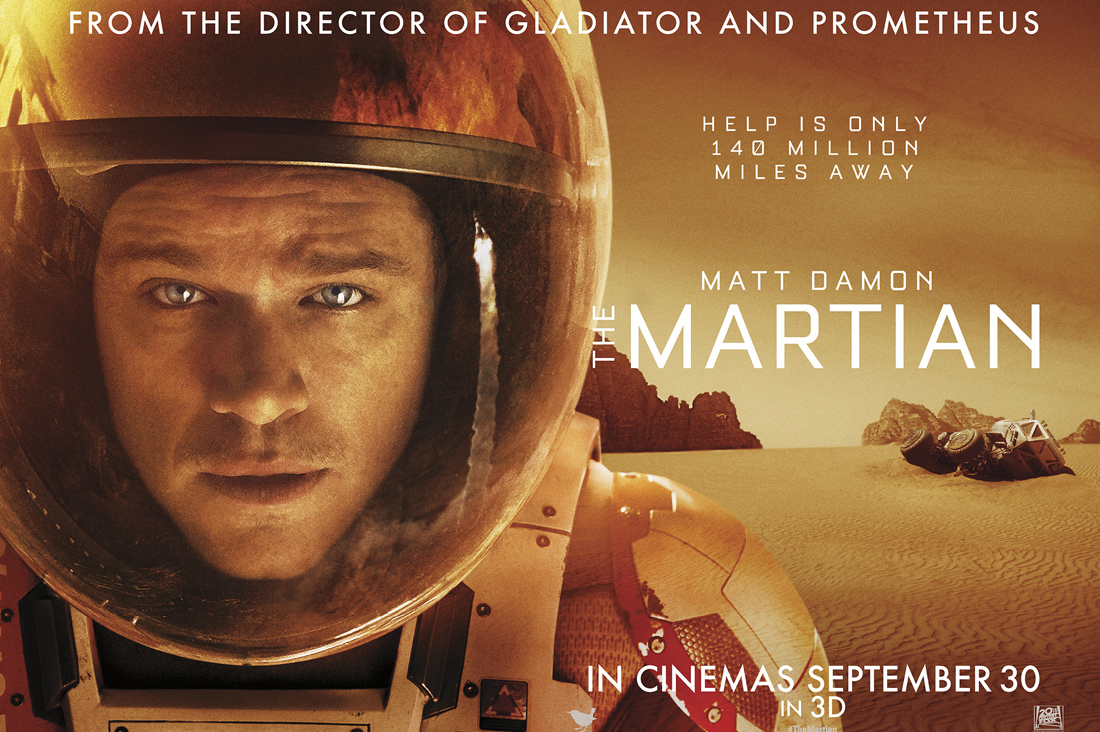
I hope everyone has already watched the film, so we can do without spoilers. If you haven’t watched yet, don’t read it better, otherwise your viewing experience may change. Today we will analyze the film for details, and see what is fiction in it and what looks like reality.
Mars
The first artistic assumption and the first contradiction with the real Mars is a sandstorm, because of which the solitary adventure of Mark Watney begins. Yes, this is a conscious invention of the author of the book, Andy Weyer - there cannot be such storms on Mars physically - the atmosphere is too rarefied, so the wind can only raise fine dry dust. Sand from the wind can only move a few centimeters per month. Similarly, the wind on Mars is unable to threaten an established rocket, at least as stocky as in the film.
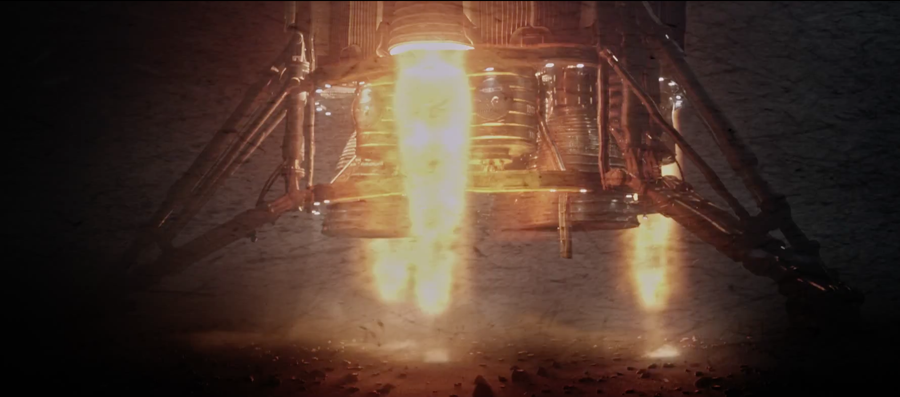
Artists did a good job on the color of the sky. In the afternoon it is just that - beige, turning into white closer to the solar disk and black - at the zenith. Although in calm weather, there is lighter.

On Mars, the color of the sky depends primarily on the concentration of dust in the atmosphere. If the windy off-season, then the sky becomes beige almost everything. If it is a calm winter, then the blackness of the sky descends close to the horizon. In general, the Martian sky can be imagined on Earth during one of the sandstorms arriving from the Sahara. But in Martian dust storms, the color of the sky turns brown, as shown in some landscapes of the film. With sunset, the operators repeated the mistake that NASA made back in the 80s. Earth experience tells us that the sunset is red, and if we add red dust to it, we will get a redder sky.
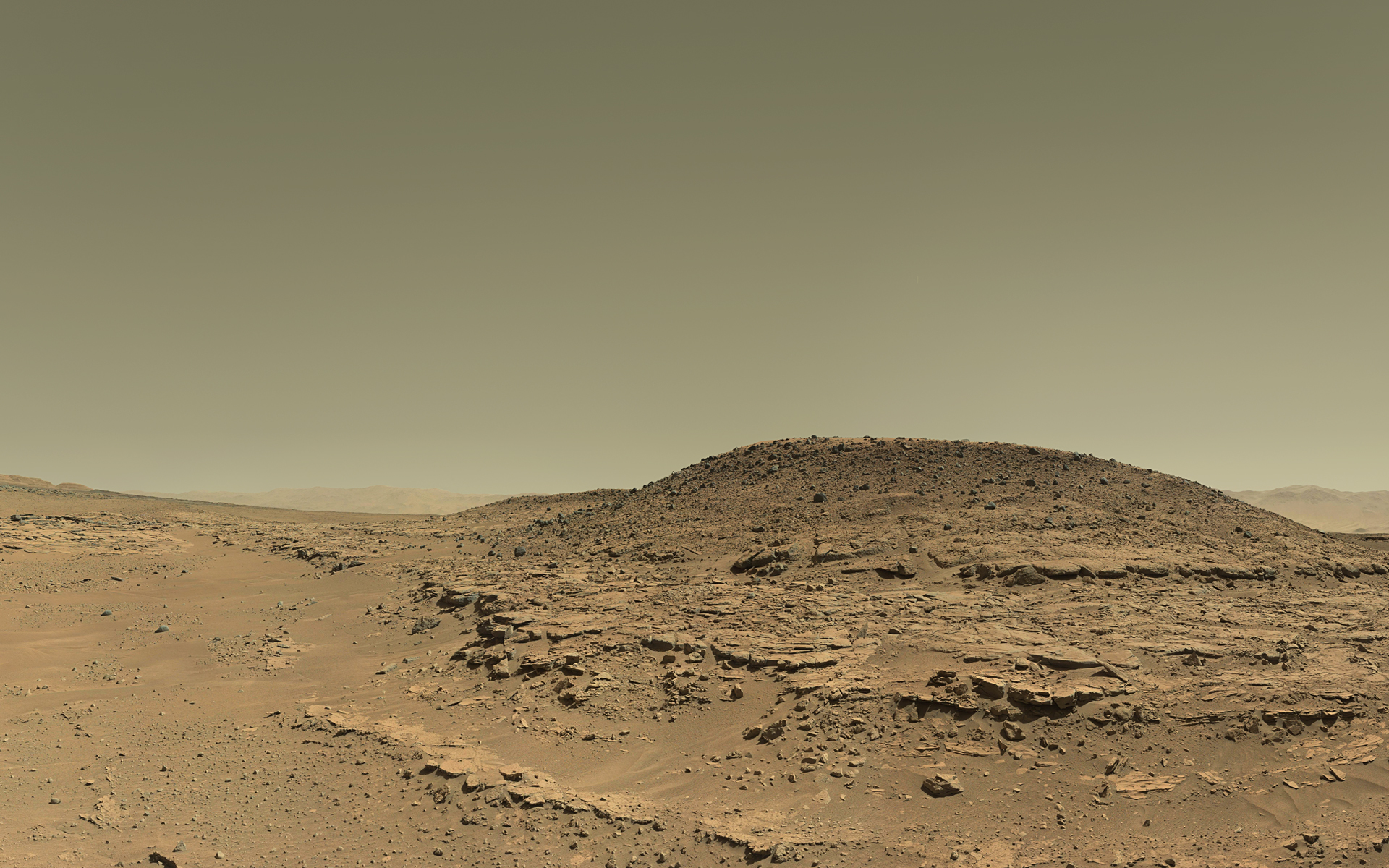
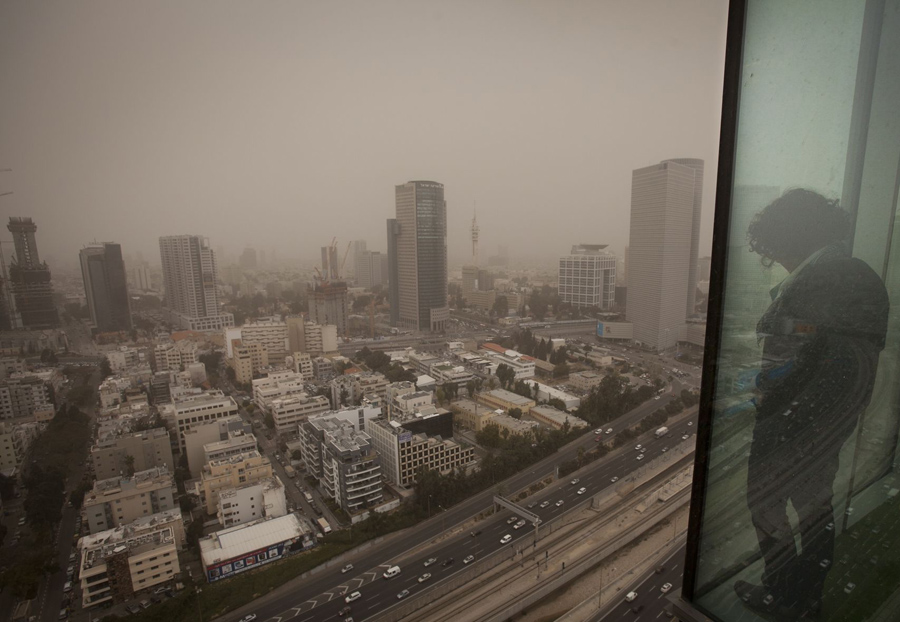

But this is a mistake. The atmosphere of Mars is not enough to scatter sunlight to the red part of the spectrum, so the sunsets turn blue - about as much as the Earth’s atmosphere scatters the light during the day.

The terrain for filming the “Martian” was chosen convincingly - it looks like Mars. In some places on a neighboring planet, it is quite possible to find something similar. The fallacy, or rather misleading, of the film is that it supports the stereotype of the monotony of the Martian landscape.

During his trip, the hero overcame the lava plain, the channel of catastrophic floods, went down into a giant crater. And in the picture it seems that he constantly rolls in the sand between three weathered mountains (although in fact it is).
Before the release of the film, NASA published a satellite image of the area where the plot of the Ares-3 expedition landed.

You can see that the landscape is not even close to what we see in the film. Before us is just a relatively young lava plain, there is very little sand, there are no old mountains with traces of severe erosion either. It would be interesting to look at the pimples of small mud volcanoes that appeared there when the lava covered layers of wet soil or ice. But in general, the area is rather boring for science, so it’s not clear why flying to this place specifically, but more on that below.
The second significant artistic assumption, but rather the author’s ignorance of the issue, is water production. The author of the book was so carried away by engineering details that he forgot about Martian conditions.
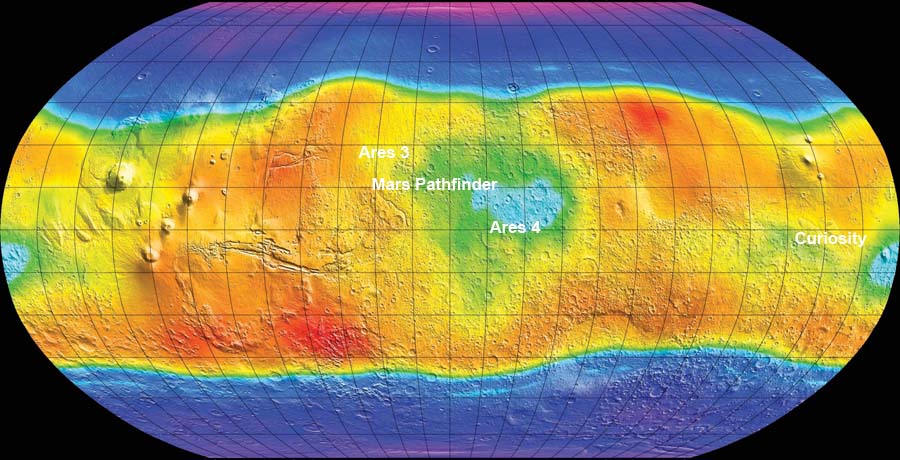
If you look at a map of the distribution of water in the near-surface soil of Mars, we will see that at the place of events, water makes up about 3% of the soil. This is quite a bit, but already more than zero, i.e. water extraction on Mars does not require experiments with explosive toxic fuel components, but a shovel and a simple
The last thing I would like to touch upon in the Martian theme is the soil. The film and the book here impose the same stereotype on us as with landscapes - as if Mars is the same. The astronaut needed the soil for the potatoes, he went out the door and dug up.

Really different soil layers on Mars formed under different physical conditions, in different climatic periods, and contain different chemical compounds. The surface layer witnesses the last geological period when volcanic gases saturated the soil with sulfur and chlorine compounds, the vapor of which would inevitably kill both potatoes and the heroic colonizer, as soon as water spilled on them.
There are more fertile rocks on Mars (at least less destructive), like the clay layer that Curiosity rover discovered. There are organic compounds and nitrogen dioxide, i.e. components practically necessary for successful farming.
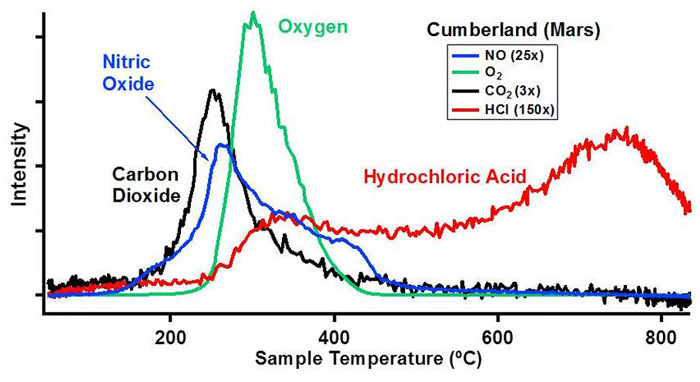
Moreover, the nitrogen content seemsa hundred times higher than the norm of applying nitrogen fertilizers for earth fields. So, before planting potatoes, it would be necessary to conduct many analyzes and experiments to determine the local deposits of potentially fertile soils, the necessary ratio of components, it is possible to make a mixture of them, and only after that proceed with sowing.
Another such point is suggested by microbiologists: in order for the soil to become soil suitable for agriculture, it should include not only organic matter, but also the necessary bacterial cultures. The necessary set of crops contains manure of herbivores, but the "products" of human origin are not very suitable for this.
The science
One blooper appears in the film before the sandstorm, when astronauts roam around the base and collect pebbles. It seems that everything is fine, they did exactly the same in a real landing on the moon. But on the moon, research was at an early stage, when any matched stone turned out to be an invaluable gift for all earthly science, and not scientists flew there.
Unlike the moon of the 70s, Mars is even now very well studied using satellites and rovers. The scientific tasks of people on Mars will be an order of magnitude more complicated than the functions of the Mars rovers, which are already able to study counter pebbles, and are planning to collect the collection by 2020.
Everyone remembers that Mars is all in craters? So stones can bring explosions over tens of kilometers, and picking up debris without reference to the underlying rock is a meaningless task. Even the Curiosity rover pays little attention to oncoming stones - it studies the occurrence of geological layers, their sequence, thickness and composition.

People should do the same, where it is much more needed: on the walls of canyons, caves or in river valleys. Only people can conduct deep drilling, collect cores, prepare them for delivery to Earth.


After these studies, it would be much easier for Mark Watney to find layers with a high content of water in the soil and a low content of pesticides, but not a word about this in the book and film.
I’ll say a few words about the landing sites. Points are selected by the author, frankly, “from the bulldozer”. Now, if you wish, you can find sections of the Martian terrain that are primarily of interest to scientists: the alleged landing sites of the Curiosity and Exomars rovers have been published. None of the lists contain the Acidali Plain or the Schiaparelli Crater. But in all projects, the option of landing in the Mart Valley ( Mawrth Vallis ) is considered.

On the map, it is located between the book Ares-3 and Ares-4. There are very interesting sediment left over as a result of vigorous activity of water. There you can find a lot of interesting things in the layers. It is likely that Exomars or the next NASA rover in 2020 will go there.
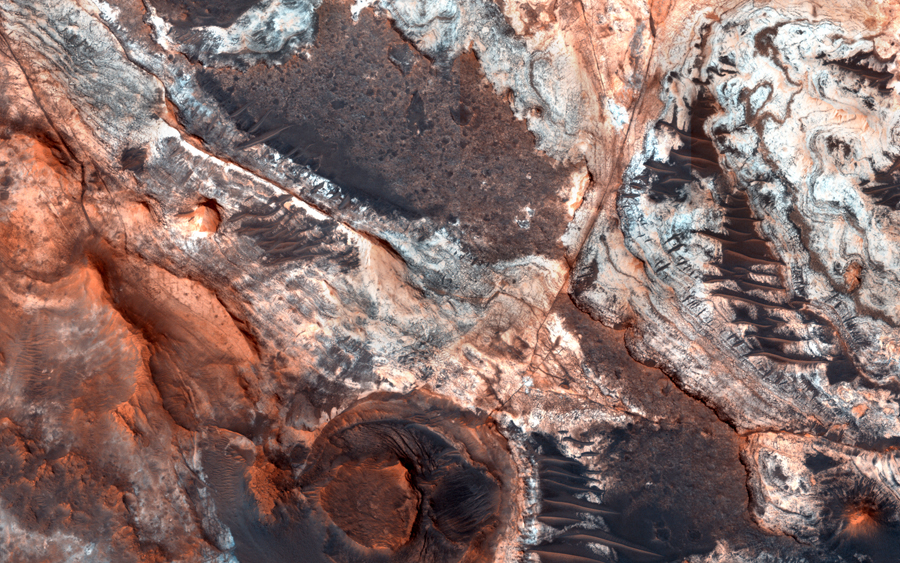
The phrase of the book and film chapter of NASA "We are a public organization, if we shot, we must publish it within 24 hours" is also fantastic. Actually, NASA’s openness and PR is the agency’s good will, and the realization that the better they show their work to taxpayers, the more they will receive funding. They illuminate large missions, to which much attention has been attracted, for example, from the Curiosity rover or the Cassini probe, all photographs are automatically uploaded to an open server at the time of arrival from space.
Other missions, like Messenger or New Horizons, are more restrained on publishing raw materials. To find the source for Messenger you need to work hard, and the source for New Horizonspost with a delay of weeks and months, as a rule already after the publication of official press releases where the pictures prepared for publication are posted.
All data is ultimately uploaded to the PDS-archive , but with a six-month delay. This is done so that scientists who work in missions have time to analyze them and make discoveries. For comparison, European scientists are also jealous of the pictures, for example, from the researcher of the comet Rosetta, some frames are published only a year after they are received.
Politics
German in the NASA crew is normal. The United States and the European Union have almost one manned program for two. Right now they are building the Orion manned interplanetary ship together, and they will probably fly together.
The most painful question for the domestic audience is: “Where are the Russians?”.
Someone saw this as a deep anti-Russian propaganda plan. But, it seems to me, dislike for the Russians - Andy Weyer has something personal. For the whole book he mentions the Soviet and Russian space programs a couple of times, and with rather unreasonable arrivals.
To the apology of the author and the creators of the film, one could say that if the Russians were in their narrative, there would be no such deep drama with cutting out a spare rocket to save the astronaut. Russia would always be able to find a "Union" with a "Frigate" to throw a ton of stew on Mars. Indian and European missiles, by the way, are also ignored in the book, as well as the existence of SpaceX .
Maybe as an apology, or maybe just from the incompetence of the designer, the Russian Soyuz ended up on all the Martian posters.

The phrase of a Chinese official “Let scientists decide” sounded completely unrealistic in the film. In the book, it still somehow explains: they say let them think whether they are ready to exchange the launch of the solar observatory for the flight of the taikonaut to Mars. In the film, this phrase is presented as a gesture of bureaucratic nobility and respect for the scientific community.

Actually, give the scientific community free rein, and it will generally close the manned program, for in flights of people 90% of propaganda and 10% of science. For the cost of one human flight to Mars, the entire solar system can be inundated with observatories, probes and planet rovers that will do science.
Today we will complete the review of the film, and tomorrow we will continue to analyze the most extensive technical side of the film.
